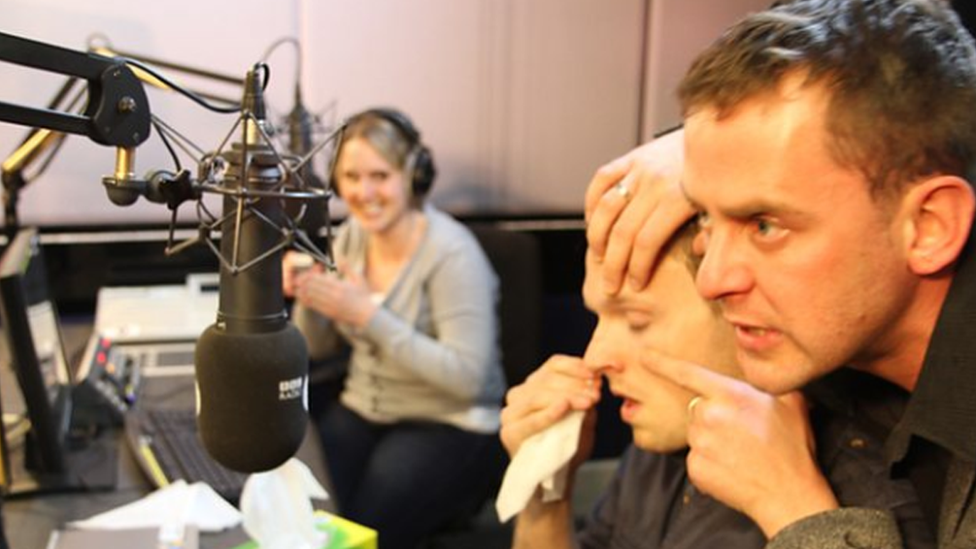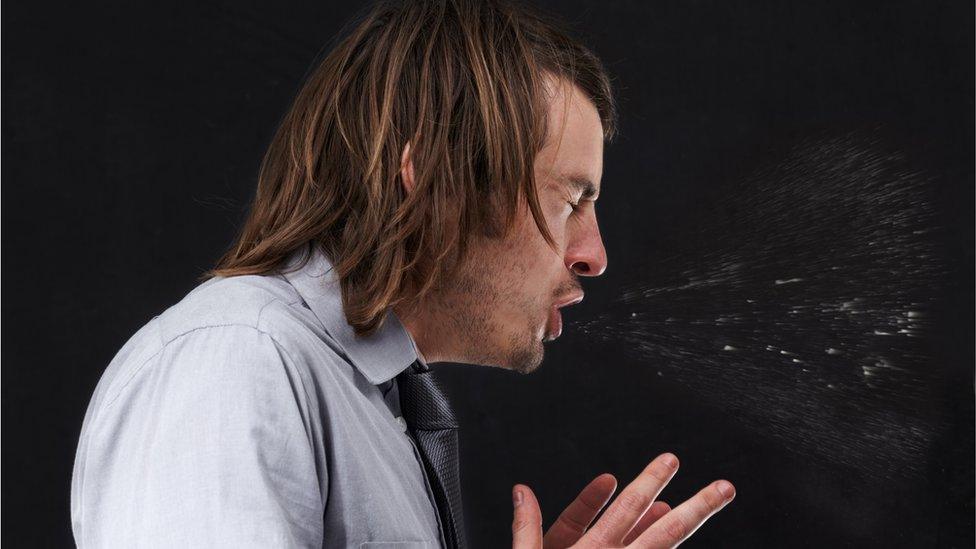Sneezing myths and facts
- Published

Sneezing is an involuntary reflex that all humans have but we still understand relatively little about.
Following on from the news that stifling a sneeze by clamping your nose and mouth shut can cause serious physical damage, we explore some sneezing facts - and myths.
Weird things can make us sneeze
According to researchers, it's not just germs and pollen that can cause a sneezing attack.
Bright light, including sunlight, can bring on a fit of sneezing.
German researchers at Saarland University Medical Centre, external found most of more than 1,000 patients they interviewed in their ear, nose and throat department had experienced photic sneeze reflex - sometimes called Achoo (autosomal cholinergic helio-ophtalmologic outburst).
And experts suspect it is genetic.
There is little or no evidence for some other triggers.
Some people say having a big meal and a full stomach can start them sneezing.
And getting sexually aroused might even bring on a bout.
The nose, like the genitals, contains erectile tissue, researchers say in the Journal of The Association of Physicians of India, external.
They are probably referring to an anonymous letter sent to a medical journal in 1972 by a man who said he suffered from severe sneezing immediately after orgasm.
His letter, in the Journal of the American Medical Association, prompted doctors to suggest he tried topical anaesthesia to numb the offending area - the nose, rather than the groin.
You won't sneeze in your sleep
Some believe sneezing might not happen during rapid eye movement (REM) sleep, external - in which dreams occur.
That's because the body's muscles relax and reflex reactions shut down.
But people move in and out of REM sleep when they slumber, and it could still be possible to sneeze then. Unsurprisingly, there hasn't been much research to give a definitive answer.
You can't sneeze with your eyes open because your eyes will pop out

A quick Google will tell you that although it is true that when we sneeze our eyes do shut automatically, the pressure that would build up behind the eyeballs from sneezing would not be enough to dislodge the eyes.
BBC Radio 1 DJ Scott Mills tried it out with guest Greg Foot. The result? No eye popping.
A sneeze can travel up to 8m (26ft) and stay airborne for minutes
Experiments by Lydia Bourouiba at the Massachusetts Institute of Technology, external show sneezes create clouds of spit and gas that carry infectious droplets a considerable distance.
These clouds can hang around in the air for minutes.
Sneezing can go on for years
According to Guinness World Records, the longest sneezing fit is 976 days.
Briton Donna Griffiths started sneezing on 13 January 1981 and surpassed the previous duration record on 26 July 1981.
She sneezed an estimated million times in the first 365 days and achieved her first sneeze-free day on 16 September 1983.
Best way to make someone sneeze
For her experiments, Lydia Bourouiba gently "tickled" the subjects' nose with a rod-shaped device for a few seconds.
A painful method some have tried is pulling out nose hair - or sniffing pepper.
How to stop a sneeze
There's no guaranteed way to stop a sneeze.
Many people try holding their breath for a few seconds until the urge hopefully passes.
If you are allergic to something, such as pollen, getting rid of the trigger could help ease symptoms.
Why do we sneeze?
Sneezes are a natural defence against things that irritate the membranes lining the nose.
Nerve signals get the muscles of the chest and throat to respond, expelling mucous out of the mouth and nose.
- Published16 January 2018

- Published24 November 2015
